
Should You Bulk or Cut First?
You should bulk if you want to get bigger, stronger, and more muscular. You should cut if you want to focus on burning fat. But what if you want to be both bigger and leaner? Should you start by bulking or cutting?
The next question is, when should you switch from bulking to cutting or vice versa? When bulking, how fat should you get before you switch to a cut? When cutting, how lean should you get before going back to bulking?
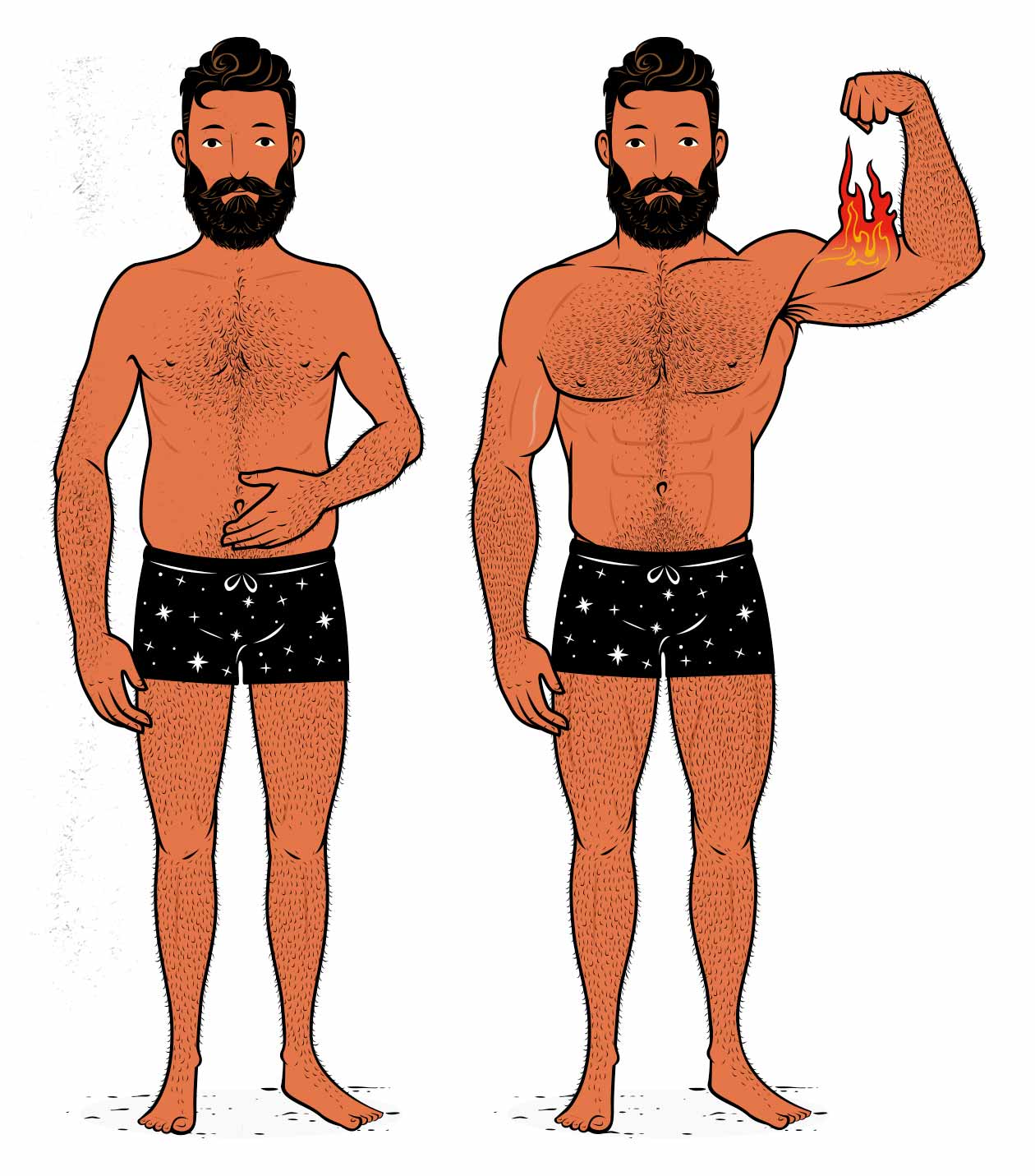
What is Cutting?
Cutting is when you lose weight to lose fat. When you eat fewer calories than you need, you get those missing calories from burning body fat. Getting into a calorie deficit is the most effective way to lose fat.
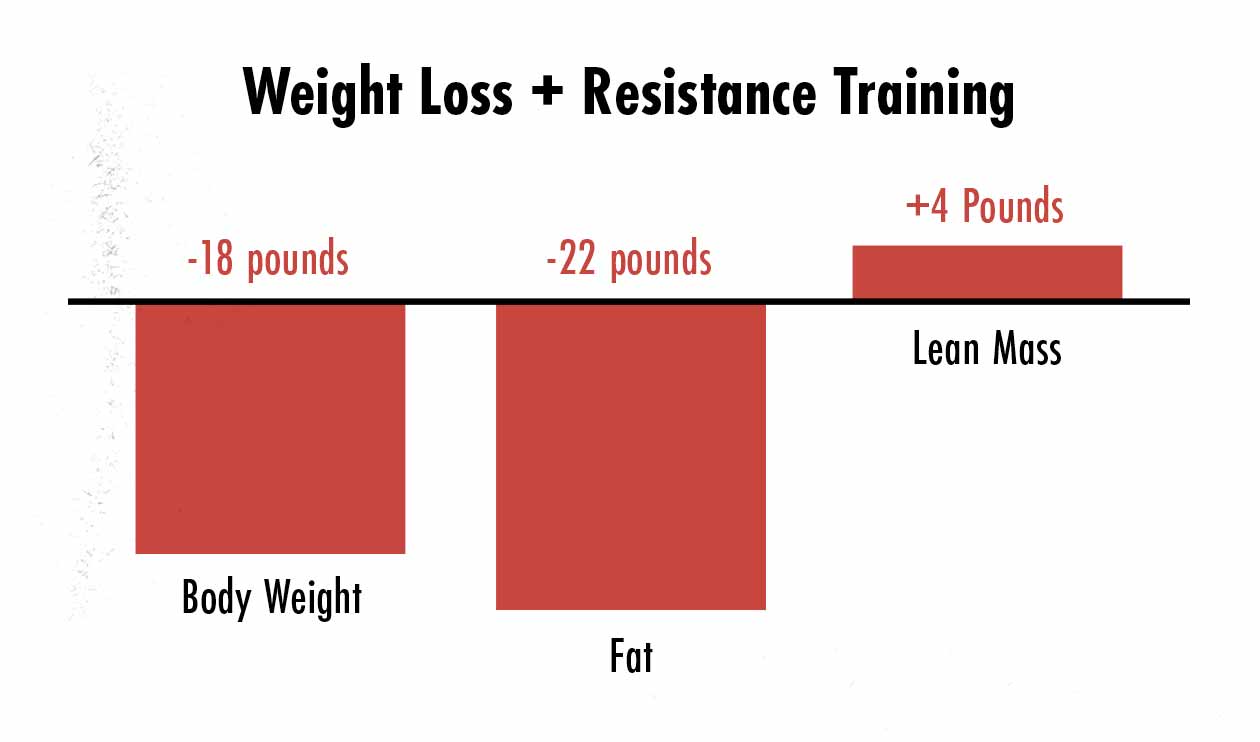
What makes cutting different from typical weight loss is an emphasis on gaining (or at least maintaining) muscle mass. To do this, we combine weight loss with hypertrophy training and a higher protein diet. This, too, works very well. It’s common for beginners to gain muscle mass and strength while cutting. As our body composition improves, that gets harder. But even so, intermediate lifters can often maintain their muscle mass.
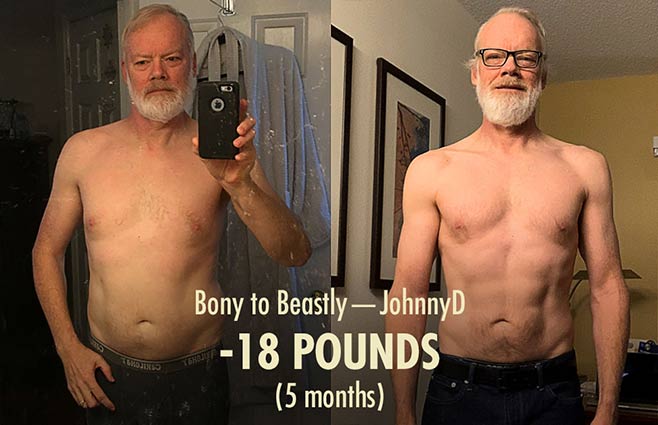
The problem is, when we’re cutting, we aren’t able to gain muscle very quickly or efficiently. There’s no extra energy to invest in muscle growth. It’s possible to gain a bit of muscle and strength, but the results are often fairly underwhelming. Cutting is designed for fat loss, not muscle gain.
When Should You Cut?
I’m going to talk about body fat percentages. You don’t need to know your exact body fat percentage, but it helps to have a general idea. If you aren’t sure about yours, we have a body fat calculator.
- If you’re overweight, cutting is the best place to start. The more fat you have on your frame, the more energy you have to invest in muscle growth. Most overweight people can build muscle while losing fat.
- If you’re skinny-fat, you can bulk or cut. Since you aren’t very muscular yet, and since your body is still holding onto excess fat, you can probably gain a bit of muscle even while cutting. But you don’t have to start by cutting. It’s entirely up to you. Let your heart decide.
- If you want to get impressively lean, cutting is how you do that, and you can do it at any time. Just keep in mind that it’s difficult to build muscle while getting under 10–12% body fat. Plus, if you switch to bulking afterwards, you’ll likely regain a disproportionate amount of fat until you’re back over 10–12%.
Everyone is a bit different, so it’s hard to be precise, but as a general rule of thumb, if you’re over 20% body fat, you can improve your health and appearance by cutting down to a lower body-fat percentage.
If you’re between 15–20% body fat, you might be a bit fatter than you’d like, and so cutting is certainly an option. But you don’t have to cut. There’s nothing wrong with being, say, 17% body fat. That’s a healthy body-fat percentage and it’s a perfectly good place to bulk from. So it’s entirely up to you. If you want to be leaner, cut. If you want to be bigger and stronger, keep bulking.
If you’re under 10–12% body fat, cutting doesn’t make much sense unless you’re a bodybuilder, fitness model, or you want to get impressively lean. Just keep in mind that it won’t improve your health, it might not improve your appearance, and your chances of building muscle are basically nil.
What is Bulking?
Bulking is when you gain weight to build muscle, becoming bigger and stronger. When you eat more calories than you need, you have extra energy that you can invest in muscle growth (study). Plus, the only way to get heavier is to gain weight. If you’re 150 pounds and dreaming of being 200 pounds, bulking is the only way there.
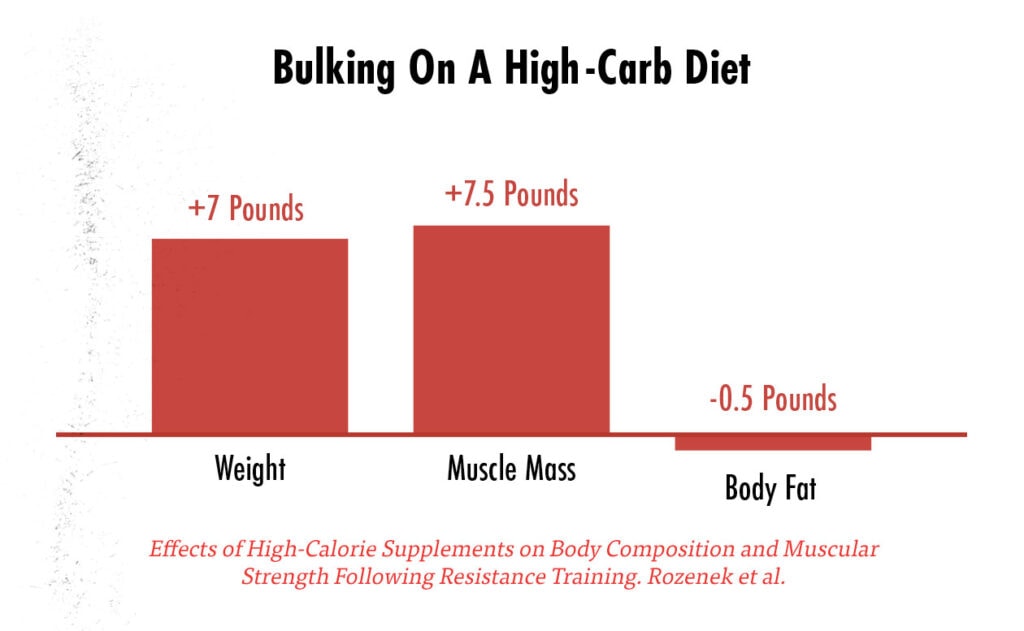
What makes bulking different from how most people gain weight is that there’s a heavy emphasis on gaining weight leanly—on building muscle. To do that, we do hypertrophy training, we eat enough protein and carbs, and we gain weight at a pace that matches how fast we can build muscle. That way, most (or all) of the weight we gain is muscle.
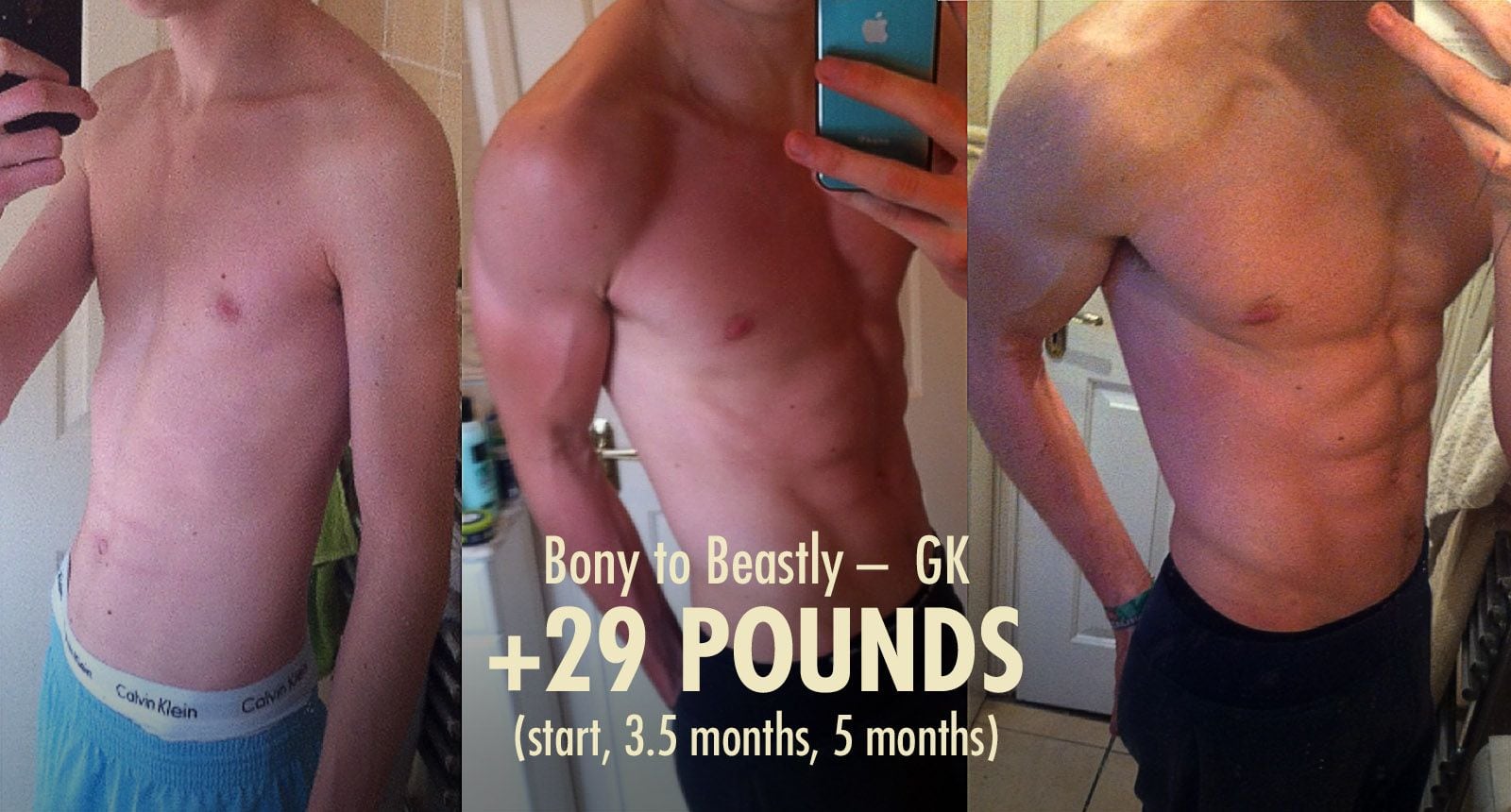
This, too, works very well. It’s common for beginners to build muscle incredibly fast, and even intermediate lifters are often able to gain muscle quite steadily and leanly, allowing them to bulk for several months before needing to do another cut.
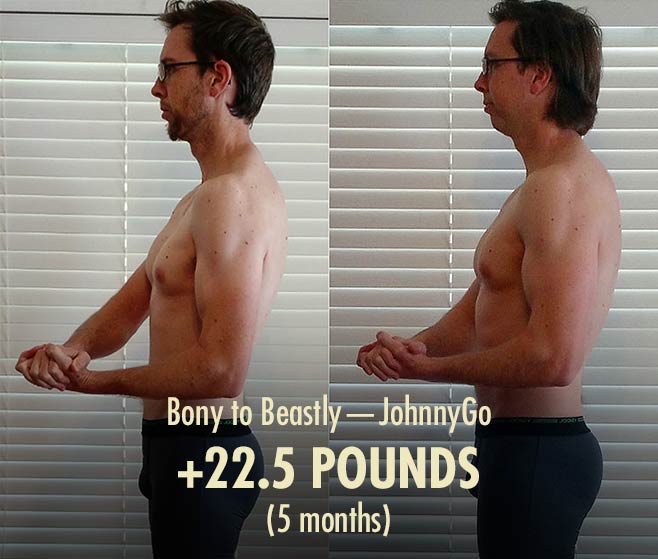
The problem is, when we’re bulking, we do tend to gain at least a little bit of fat. There’s all of this extra energy we’re eating, and what isn’t invested in muscle growth inevitably gets stored as body fat. The good news is, if we start our bulks fairly lean, then even if we gain a bit of fat, we can stop our bulks while we’re still fairly lean. For example, if you start your bulk at 12% body fat and switch to a cut at 16% body fat, you’re lean in both cases. You’ve never gotten close to that 20% threshold where you start to look chubby.
When Should You Bulk?
- If you’re skinny, thin, or underweight, bulking is the best place to start. Bulking is how you’ll become bigger, stronger, and more muscular. And since you’re still so far away from your genetic muscular potential, you can build muscle quite quickly and leanly—your so-called “newbie gains.”
- If you want to prioritize building muscle, bulking is how you do that. It’s much easier and faster to build muscle when you’re eating in at least a small calorie surplus.
So as a rule of thumb, if you’re between 8–12% body fat, getting even leaner won’t improve your health or appearance, and it won’t allow you to gain much muscle or strength. You could hang out there for a while, maintaining your progress, or you could gear into a bulk to start building muscle again.
If you’re between 12–17% body fat, you might be a bit fatter than you’d like, so cutting isn’t wrong, but you’re still in a great place to build muscle from. This is where it really comes down to personal preference. But if you’re keen on building muscle, bulking is the best path forward.
If you’re much over 20% body fat, that’s the point where gaining more fat can start to have a negative impact on your health. Plus, going much higher than that can start to cause other problems, such as growing extra skin. So around 20% body fat tends to be the bulking cutoff point. Time to start cutting.
Is Bulking & Cutting the Best Way to Build Muscle?
Most people want to look better, live longer, and become stronger. A great way to do that is to build muscle and lose fat. But what if building muscle came at the cost of gaining fat? Or what if losing fat came at the cost of getting smaller? That’s the dilemma that most people struggle with when deciding between bulking and cutting. That’s why body recomposition is so popular.
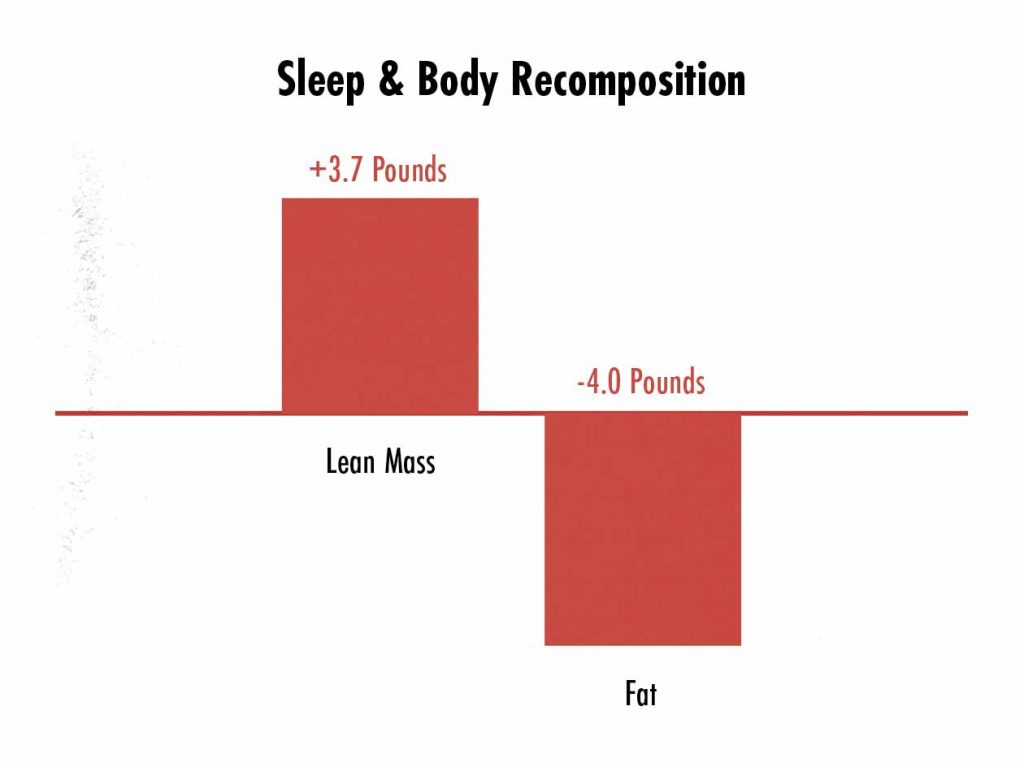
With body recomposition, the idea is to gain muscle and lose fat while maintaining the same overall body weight. And it can work. Some people are indeed able to build muscle while losing fat. Those people tend to be:
- Skinny-fat beginners: guys who are new to proper hypertrophy training are often able to gain muscle and lose fat quite easily, especially if they’re under-muscled and over-fat.
- Detrained lifters: if you were muscular in the past, but you’ve let yourself get out of shape, then you’ll be able to take advantage of muscle memory, regaining your lost muscle without needing to be in a calorie surplus. (This includes guys who are still in the habit of lifting but who aren’t as big or strong as they used to be.)
- Overweight guys: if you have quite a lot of extra body fat, you might be able to burn fat while building muscle.
If you’re in one of those situations, feel free to eat according to your appetite, letting your weight stay about the same. If you’re gaining strength from workout to workout, then you’re making progress, and there’s no need to change what you’re doing until you hit a plateau.
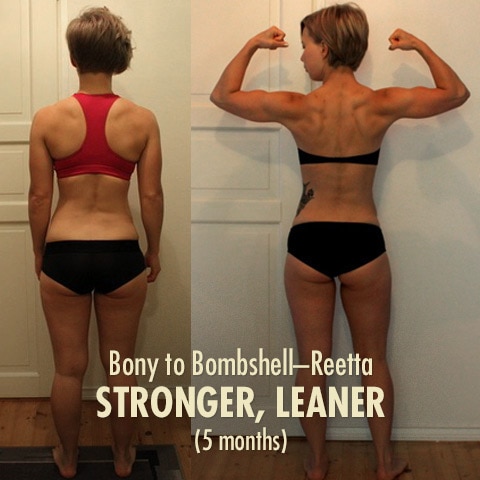
For example, here’s Reetta. On the left, she was in great shape but new to hypertrophy training. As soon as she started training for muscle growth, she noticed that she lost quite a lot of fat, especially in her lower body, while gaining a similar amount of muscle. And she was happy with her overall body weight, so that was perfect.
But keep in mind that if you want to weigh less than you currently do, you need to cut. And if you want to be bigger than you currently are, you need to bulk. When I was 130 pounds, the only possible way for me to get up to my current weight of 195 pounds was to gain weight. There was no other option. I had to bulk.
The other thing to remember is that you’ll make faster progress by bulking and cutting. If you’re skinny-fat, the quickest way to improve your body composition is to quickly cut off the fat, trying to build a bit of muscle as you do it. And then, when you’re lean enough, gear into a lean bulk to improve your rate of muscle growth.
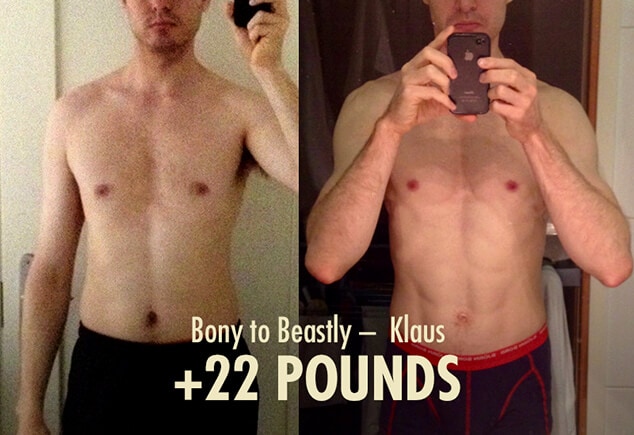
Finally, it’s common to hit a plateau while attempting body recomposition. At a certain point, it can get damn near impossible to lose more fat while building more muscle. If you’re under 12% body fat or near your genetic muscular potential, you’ll probably need to bulk to continue building muscle.
In fact, most intermediate lifters plateau forever because they stop going through periods of gaining weight. That’s not necessarily bad. Maintaining a strong and healthy physique is great. But if body recomposition stops giving you the progress that you want, consider gearing into another bulk.
Finding What Works for You
For me, when I get below 11% body fat, I find it hard to maintain my strength, hard to feel good, and my face starts to look corpselike. So at 10–11%, I’m done cutting. From there, I either maintain or gain weight.
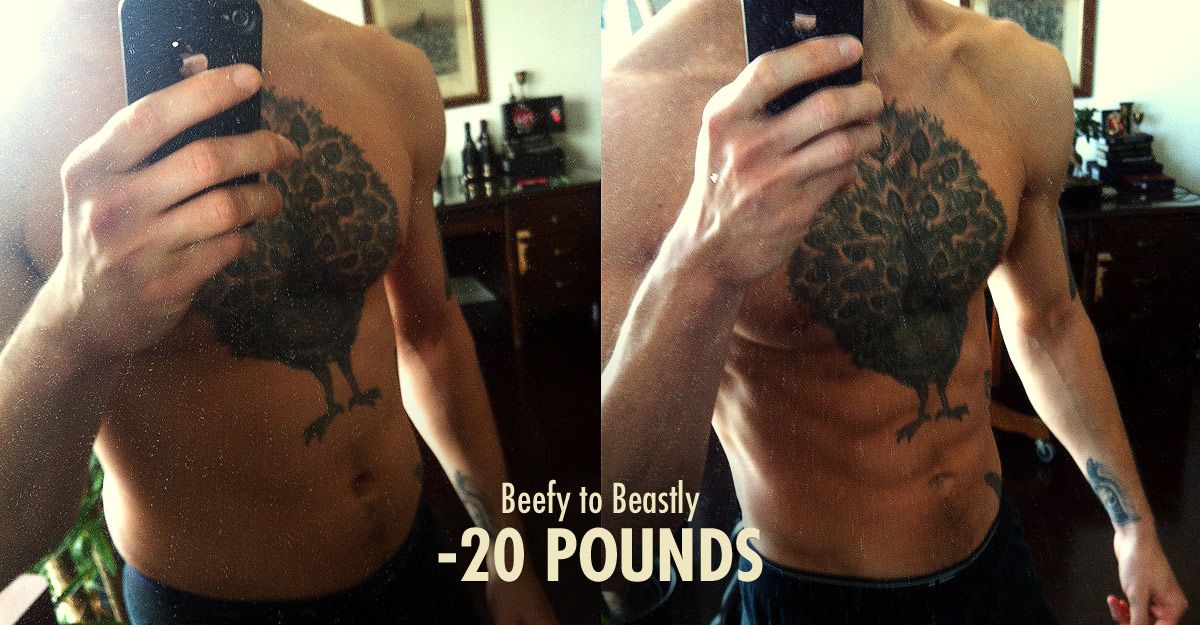
When bulking, I start to feel chubby at around 16% body fat. Not that I look bad or that I’m unhealthy, just that I don’t like it. So when I stop being able to see my abs, I might spend a month losing a bit of fat. Not necessarily a bonafide cut, just a break from bulking that allows my body fat percentage to drift down a little bit.
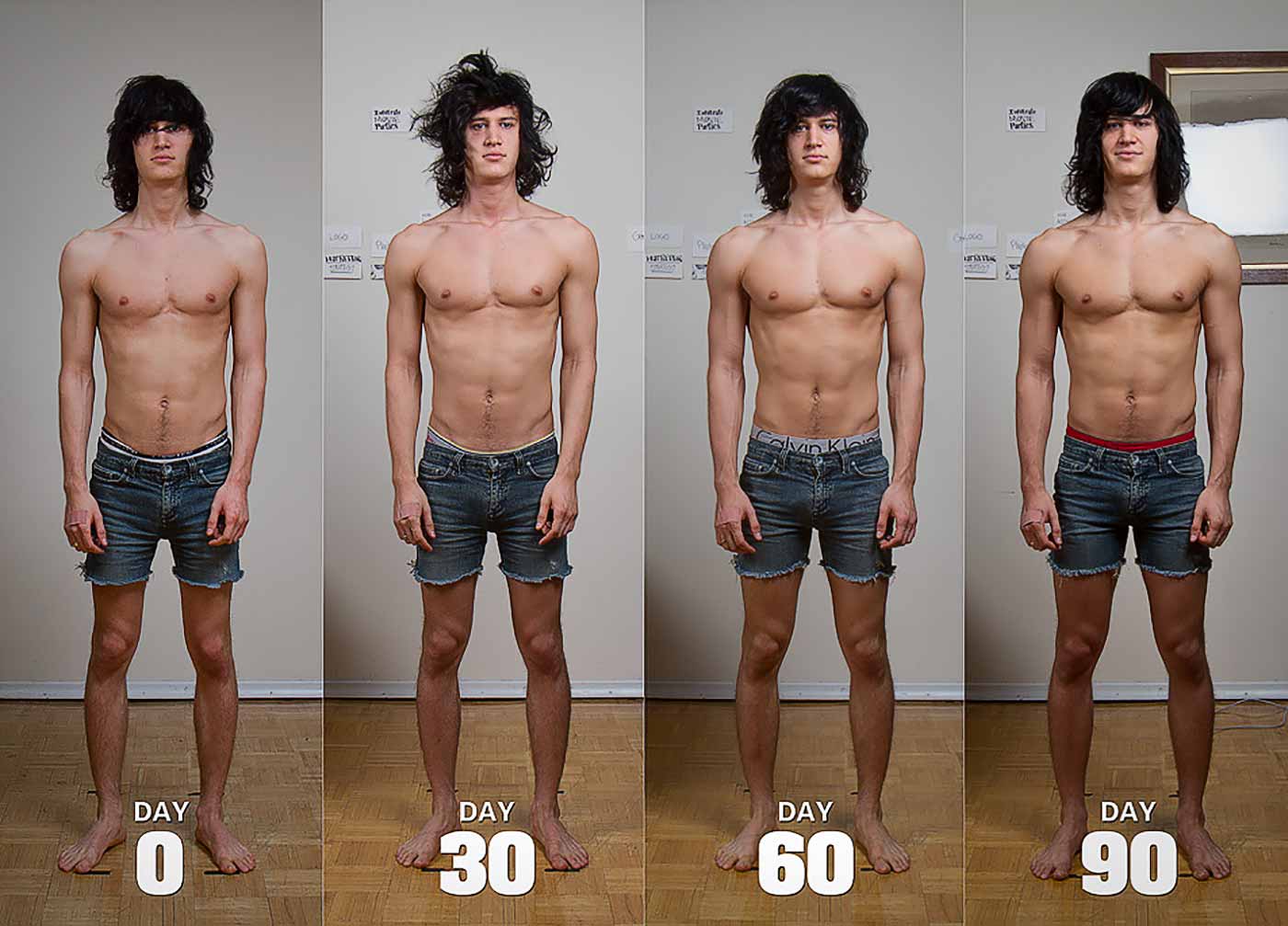
That zone of 11–15% body fat works really well for me. I never get so lean that I start to feel bad, and I never gain so much fat that I start to look out of shape. I’m always staying within that fairly narrow range. But more importantly, that range gives me room to manoeuvre. At 11%, I can bulk fairly aggressively, gaining quite a lot of muscle and strength. And when I get to 15%, I’m still happy with how I look. That’s how I’ve gained 65 pounds.

That’s just what works for me, though. Everyone is a little bit different. You might start to feel miserably hungry and weak as soon as you dip below 14%, or maybe you get all the way down to 9% before it becomes a problem. The same is true with bulking. Maybe you look and feel great at 18% body fat, and that’s totally fine. You have to find what works for you.
Summary
If you’re overweight, you should cut. If you’re underweight, you should bulk. If you’re somewhere in between, you can bulk or cut—it’s entirely up to you.
- When should you bulk? Any time that you want to prioritize muscle and strength gains, you should be bulking, even if you’re gaining weight very slowly. When you’re under 20% body fat, it’s perfectly fine to bulk, but most people will have better luck by cutting down to 15% or lower first.
- When should you cut? Any time you want to prioritize fat loss, you should be cutting. When you’re over 20% body fat, it’s recommended to cut, but some people want to stay quite a bit leaner, cutting any time they get over 15–17% body fat. And that’s okay, too.

If you want a customizable hypertrophy training program (and full guide) that builds on these principles, check out our Outlift Intermediate Bulking Program. Or, if you’re still skinny or skinny-fat, try our Bony to Beastly (men’s) program or Bony to Bombshell (women’s) program. While doing these programs, you can bulk, cut, or do body recomposition.



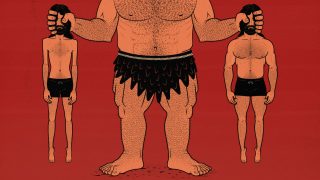
“Plateau forever”. Yes that’s very true
Thank you for all you do! Great content
My pleasure, Will!
This is so interesting. I love your site and so glad I stumbled across it, I am a 54 year old female, weighing 57.8kg and think my bf is around 27% (I have scales but not sure how accurate). I am essentially bulking at moment as I would like to gain more muscle on basis that more muscles burns more calories, but see myself getting heavier without necessarily looking more muscly. I am eating around 1900 cals and some days I still feel really hungry! I feel I need to lose some bf but the thought of eating less calories is a struggle. I lift heavy x 3 and do a couple of hiit sessions a week and try to keep my step count around 10k but am just not seeing the changes I would like. Calculators suggest for weight loss I should be on around 1100/1200 but that just doesn’t seem enough to me for the work I am doing. Are you able to offer any advice? (Sorry if this is all a bit jumbled!) thanks. Jill
Hey Jill, thank you so much!
For women who are decently active, are lifting weights, and are eager to maintain/gain strength, we normally recommend starting a cut at around 13x bodyweight in pounds. So for you, that’d be around 1600 calories per day, adjusting from there. Thing is, you’re already tracking how much you’re eating, so you don’t really need to go back to calorie calculators. Those are just a super rough starting point. Once you know how much you’re eating, it’s best to just adjust how much you’re eating.
For instance, if you’re gaining half a pound per week at 1900 calories and you’d like to start losing half a pound per week, you could start by dropping your calories by around 500 per day. That’d bring you to 1400. From there, you’d track how your weight changes each week and adjust by 200-calorie increments.
If you’re not gaining weight at 1900, you could start by dropping 250 calories instead: 1650. Again, the trick will be to monitor how your weight changes and adjust from there.
Losing weights tends to leave people feeling hungry, though. You won’t be eating enough food. That’s why your body will have to burn body fat for energy.
You don’t have to lose weight, either. It’s up to you. It sounds like you want to lose some fat, though, and losing weight is indeed the best way to do it.
I really hope that helps!
Hi Shane,
I seem to be gaining about half a pound a week, but I don’t feel I’m noticing the increase in muscle mass that I was hoping would be going with that. Most days I’m in a caloric surplus. I had hoped I would increase muscle mass and therefore lose body fat that way, rather than having to lose weight to lose body fat. So if I understand you correctly you are suggesting if I wanted to lose that half a pound a week I could cut back from 1900 to 1400 calories then play with it from there in 200 calorie increments? I guess I’m disappointed that something I’m doing is not working with the muscle gain plan. Maybe I need to sign up to your program! Thank you for replying. It’s very good of you. Jill
It’s rare to see people losing fat while gaining weight. If that isn’t happening, that’s not a sign that you’re doing something wrong. That’s normal. The main goal while bulking is to gain muscle and strength while minimizing fat gain. You may gain some fat, but the goal is for it not to be noticeable or excessive. If you’re bulking but you aren’t gaining strength, increasing your measurements, or seeing other signs of muscle gain, that’s a sign that something is going wrong and needs to be adjusted.
To emphasize losing fat, yeah, you’ll want to lose weight. It’s not uncommon to see people gain some muscle and strength as they lose weight, but less so than while bulking. If you want to do this, yeah, I think starting at 1400 calories makes sense, adjusting from there in those 200-calorie increments.
And if your goal is to lose fat and gain muscle at the same time, best to maintain your weight. That’s finicky and difficult, though, and the results tend to come quite slowly.
If you want to sign up for our program, keep in mind that we have a bulking program specifically for women. I think it would help, but we’ve also got a ton of free information you can check out 🙂
Hi Shane,
When cutting do you stick to that number of calories regardless of what you may burn in the day? Say you do your weights workout and walk 5k some days and others just do the weights. So on the 5k days you burn more. Can you eat more? (She asks hopefully!) 🙂
Jill
Ahaha yeah! Cutting is all about burning more calories than you eat. If you burn more calories, you can eat more calories 🙂
The trick is to weigh yourself each week, see if you’re losing weight, and adjust your intake or activity levels accordingly. So don’t think as much about how much you burn per activity per day, but more about whether you’re losing weight each week. But yes, if you burn 200 calories from walking, you can eat 200 extra calories that day (or at some other point that week). And if your weight loss stalls, instead of reducing your calorie intake, you can increase your activity levels.
Hello!
I noticed that you mentioned that all three of your programs could be used to bulk, cut or reformat. I am female so I checked out the bony to bombshell program, but noticed most of the comments were about gaining weight. I am pretty muscular already, just carrying more fat, so I’d like to cut. Just wanted to check in and see if you can indeed use the women’s program to cut.
Thanks!
Hey Sara, yeah, you’re right. All of our programs are made to help people get bigger and stronger. But cutting is an important aspect of that, so all of them include information on how to cut as well.
What makes it different from a typical weight loss program, I’d say, is that even our cutting information is made for people who have an overall goal of being strong.
Also note that training is fairly similar whether you’re cutting or bulking. Even the diet is somewhat similar. The difference between cutting and bulking is mainly calorie intake.
7hsjw6
Great article as always!
I find myself in a situation where I can’t go weightlifting for at least a week and don’t want to just pass one whole week without doing any kind of exercise, so I was thinking if I could go for a couple sprinting sessions to burn a little fat (I’m currently bulking) while eating maintenance level calories. My protein intake is already fairly high (a little more than 2.5 per kg of my weight) and I would just lower carbs a little just to reach the maintenance calorie amount.
Am I going to burn any muscle mass? Would you recommend not doing it since I’m still bulking?